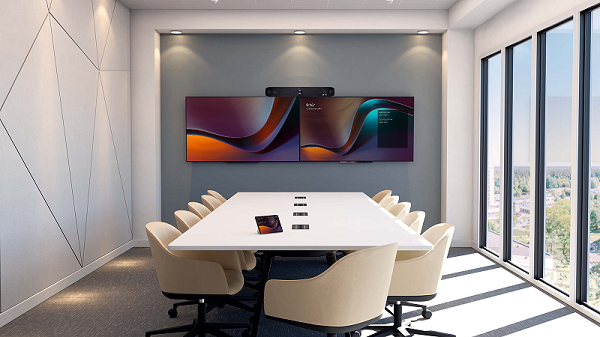The global competition for Conference Room Solution Market Share is a complex and ecosystem-driven battle, with hardware manufacturers and software giants vying for control of the modern collaboration space. As the overall market continues its strong and steady growth towards a projected valuation of $45.52 billion by 2035, the fight to be the dominant platform and provider for corporate meeting rooms is incredibly intense. This expansion, driven by a consistent 7.41% CAGR from 2025 to 2035, has created a market where leadership is not determined by a single product, but by the strength of a company's entire ecosystem, including its software platform, its certified hardware partners, and its channel of system integrators, creating a multifaceted competitive arena.
The market share landscape at the software layer is overwhelmingly dominated by a duopoly: Microsoft and Zoom. Microsoft, with its Microsoft Teams Rooms platform, holds a commanding position, leveraging the massive enterprise adoption of its broader Microsoft 365 and Teams ecosystem. For the millions of companies that already run on Microsoft, deploying Teams Rooms is a natural and deeply integrated choice. Zoom, with its Zoom Rooms platform, is the other major player. Having built its brand on ease of use and high-quality video, Zoom has captured a huge share of the market by offering a simple and reliable room experience. The intense competition between Microsoft and Zoom to be the default software platform for the conference room is the central drama of the industry today.
At the hardware layer, the market share is a more fragmented contest among a group of specialized device manufacturers. Logitech has emerged as a major leader, capturing a huge share of the market with its broad portfolio of affordable and easy-to-use USB conference cameras and video bars that are certified for both Teams and Zoom. Poly (now part of HP) is another major player, with a long history in enterprise conferencing and a strong portfolio of high-quality audio and video solutions. Other significant competitors include Crestron, which is a leader in high-end, integrated room control and automation systems, Cisco, with its portfolio of Webex-integrated devices, and a host of other audio and video specialists like Jabra, Shure, and Biamp, all competing for a piece of the hardware pie.
The dynamics of market share are defined by the powerful influence of the software platform ecosystems. Hardware vendors are in a constant race to get their devices certified by Microsoft and Zoom, as this certification is a critical requirement for many enterprise customers. This has led to the formation of two major ecosystems of hardware partners around Teams Rooms and Zoom Rooms. The hardware vendors who can build the strongest partnerships with the software giants and offer the most reliable and feature-rich certified devices are the ones who are winning the largest share of the market. This ecosystem-driven approach, where software and hardware are tightly intertwined, is the defining characteristic of the modern conference room solution market.
Explore Our Latest Trending Reports:
Automotive Camera Cleaning System Market



